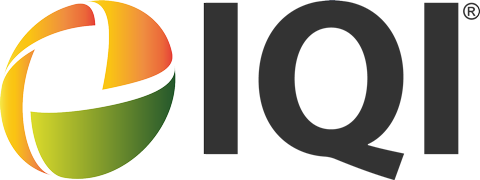In the ever-evolving landscape of workplace technology, a new and innovative solution is on the horizon – Clock out and In. Imagine a future where you can seamlessly clock out and in at work with just the palm of your hand.
This cutting-edge technology promises to revolutionize traditional time-tracking methods, offering employees a more efficient and secure way to log their work hours.
In this article, we’ll explore the key features and potential impact of this upcoming advancement in workforce management.
The Evolution of Biometric Time-Tracking

Biometric time-tracking has emerged as a cutting-edge solution in workforce management, promising enhanced accuracy, security, and efficiency compared to traditional methods.
The rise of biometrics, including fingerprint recognition, facial scanning, and the latest innovation – palm recognition, for example- is transforming how employees clock out and in at work.
Fingerprint Recognition

Fingerprint biometrics have been a pioneer in the field, leveraging the unique patterns of ridges and valleys on an individual’s fingertip.
The process involves employees registering their fingerprints into the system during an initial setup.
Subsequently, when employees need to clock in, they place their fingertips on a scanner, and the system matches the print with the stored data, ensuring secure and accurate time-tracking.
Facial Recognition:

Facial recognition technology analyzes and identifies unique facial features, such as the distance between the eyes, nose, and mouth, to create a distinct biometric profile for each individual.
Employees initially enrol by capturing their facial features; during clock-in, a quick scan verifies their identity. Facial recognition is particularly useful in touchless and high-throughput scenarios.
Palm Recognition:

Palm recognition is the latest frontier in biometric time-tracking, offering a unique advantage by capturing an individual’s palm’s intricate patterns, creases, and vein structures.
During enrollment, employees place their palms on a scanner, and the system creates a biometric attendance template. Subsequently, when clocking in, simply placing the palm on the scanner results in a rapid and secure attendance verification.
How Clock In Works: Leveraging Palm Recognition Technology
Clock In, the innovative mobile workforce management solution, introduces a seamless and secure time-tracking method through state-of-the-art palm recognition technology.
This groundbreaking approach offers business administrators a swift and accurate way for employees to clock in, transforming mundane tasks into futuristic and efficient business processes.
1. Registration of Palm Prints:
The journey with Clock In begins with employees registering their palm prints into the system during an initial setup phase.
This step involves placing the employee’s palm on a specialized scanner that captures and analyzes the unique features of the individual’s palm.
The system meticulously records the intricate details, including palm lines, creases, and vein patterns, creating a unique biometric profile record for each employee.
2. Creation of a Unique Biometric Profile:
The whole team of registered palm prints is the key to a secure and personalized biometric profile.
This profile is stored securely within the system, ensuring that each employee and team’s identity is accurately recognized during the clock-in process.
The uniqueness of palm prints adds an additional layer of security, making it exceedingly difficult for unauthorized individuals to replicate or deceive the system.
3. Clocking In with a Simple Palm Placement:
When the time comes for employees to report and clock in, the process is refreshingly straightforward. Employees need to wait at the designated reporting and clock-in area, only to place their palms on the specialized scanner and report in.
The palm recognition technology swiftly analyzes the presented palm against the stored and recorded biometric profiles.
Within a matter of seconds, the system verifies the identity and location of the employee, ensuring a quick and hassle-free clock and sign-in experience.
4. Instant Identity Verification and Entry Logging:
The heart of Clock In lies in its ability to provide instant identity verification. Once the system matches the presented palm with the employee’ stored biometric profile record, it immediately confirms the employee’s identity.
Simultaneously, the system logs the total hours and entry time, ensuring accurate and reliable tracking of work hours and payments.
This real-time logging and track and keep feature minimizes the risk of errors associated with manual entry or traditional card-based systems.
5. User-Friendly and Touchless Experience:
Clock In prioritizes user-friendliness, offering employees and customers a touchless and convenient method of clocking in.
The absence of physical contact minimizes hygiene concerns, especially in a world where users are increasingly conscious of health and safety.
The simplicity of the payroll and process reduces the learning curve, making it an accessible and efficient payroll solution for employees across various industries.
Benefits of Palm Recognition Technology:

Accuracy and Efficiency:
Palm recognition technology is highly accurate, reducing the chances of errors associated with traditional time-tracking methods like manual entry of records or badge scanning.
This efficiency saves time and ensures precise recording of users’ work hours.
Security:
The uniqueness of palm prints adds an extra layer of security to the clocking-in process. Unlike key cards or PINs, palm prints are difficult to forge or replicate, enhancing overall workplace security.
Hygiene:
In a post-pandemic world, hygiene concerns are paramount. Clock In’s touchless palm recognition eliminates the need for physical contact, reducing the risk of germ transmission in the workplace.
User-Friendly:
Clocking in becomes a hassle-free experience for employees. There’s no need to fumble with cards or remember passwords – a simple palm placement is all that’s required.
Clock In: The Future of Workplace Time-Tracking

In an era of rapid technological advancement, the future of workplace time-tracking is undergoing a paradigm shift, and at the forefront of this evolution stands Clock In.
This innovative solution represents not just a technological upgrade but a strategic leap towards a future where time-tracking in the workplace is streamlined, secure, and remarkably convenient.
While the technology is still on the horizon, its potential impact across various industries is already generating considerable excitement.
Streamlined Processes:
Clock In the app heralds a future where cumbersome and time-consuming time-tracking processes become a thing of the past.
The traditional methods of manual entry and punch card-based systems often lead to inaccuracies, delays, and administrative overhead.
With the introduction of palm recognition technology, Clock In the app streamlines the clocking-in process, ensuring that employees can start their workday promptly and efficiently.
Enhanced Security Measures:
As workplace security becomes an increasingly critical concern, Clock In integrates cutting-edge biometric technology to provide a robust solution.
The palm recognition feature ensures that only authorized personnel gain access, minimizing the risk of time fraud and unauthorized entries.
These enhanced security measures not only protect the integrity of time-tracking data but also contribute to overall workplace safety.
Convenience Redefined:
The future of workplace time-tracking is synonymous with convenience, and Clock In is leading the charge.
Employees no longer need to fumble with cards, remember passwords, or engage in complex time clock on-in rituals.
The simplicity of placing one’s palm on a designated scanner transforms online time clock access and on-tracking into a seamless and user-friendly experience, allowing employees to focus on their work rather than track time rather than navigating through cumbersome clocking-in procedures.
Integration with Advanced Technologies:
Clock In is positioned at the intersection of biometrics, payroll processing and advanced technologies. As the system evolves, it opens doors to integration with other technologies, such as artificial intelligence and machine learning.
This integration could result in predictive analytics, allowing businesses to optimize pay rates, staffing levels and overtime based on historical payroll data, ultimately improving workforce management.
Adaptability Across Industries:
One of the key strengths of Clock In lies in its adaptability across diverse industries. Whether in healthcare, finance, manufacturing, or technology, the universal nature of time-tracking makes Clock In a versatile solution applicable in various work environments.
Its potential to seamlessly integrate with existing systems ensures a smooth transition for small businesses seeking a modern time-tracking solution.
Global Accessibility:
With the rise of remote and distributed workforces, Clock In is poised to address the challenges of global accessibility.
The technology enables secure clocking in, whether employees or clients are at a centralized office or working remotely.
This adaptability ensures that businesses can maintain accurate time-tracking practices, irrespective of geographical boundaries and shift in locations.
Conclusion:
In conclusion, the future of workplace time-tracking with Clock In is a compelling vision of efficiency, security, and convenience.
As technology advances, Clock In is at the forefront, offering employers a glimpse into a future where time-tracking is not just a routine task but a strategic advantage for businesses looking to optimize their workforce management practices.
It’s time to embrace the transformative power of high-tech employee clock and position your business at the forefront of innovation.
Ready to level up your career using technology? Join IQI and propel your success in real estate! Don’t miss out on fulfilling your dreams and become a real estate agent now!
[hubspot type=form portal=5699703 id=c063034a-f66d-41ab-881b-6e6a3f275c33]


